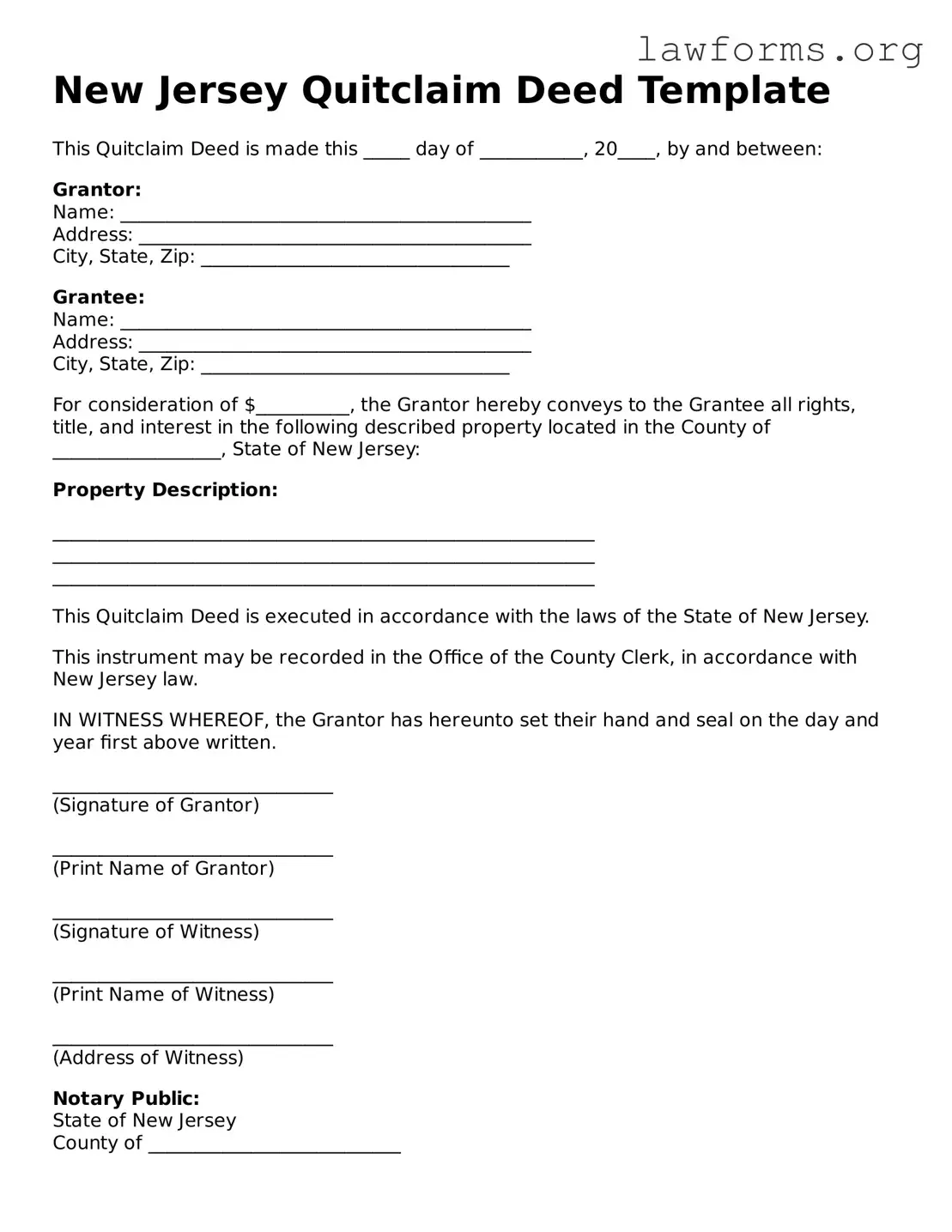New Jersey Quitclaim Deed Template
This Quitclaim Deed is made this _____ day of ___________, 20____, by and between:
Grantor:
Name: ____________________________________________
Address: __________________________________________
City, State, Zip: _________________________________
Grantee:
Name: ____________________________________________
Address: __________________________________________
City, State, Zip: _________________________________
For consideration of $__________, the Grantor hereby conveys to the Grantee all rights, title, and interest in the following described property located in the County of __________________, State of New Jersey:
Property Description:
__________________________________________________________
__________________________________________________________
__________________________________________________________
This Quitclaim Deed is executed in accordance with the laws of the State of New Jersey.
This instrument may be recorded in the Office of the County Clerk, in accordance with New Jersey law.
IN WITNESS WHEREOF, the Grantor has hereunto set their hand and seal on the day and year first above written.
______________________________
(Signature of Grantor)
______________________________
(Print Name of Grantor)
______________________________
(Signature of Witness)
______________________________
(Print Name of Witness)
______________________________
(Address of Witness)
Notary Public:
State of New Jersey
County of ___________________________
On this _____ day of __________, 20____, before me, a Notary Public in and for said State, personally appeared _________________________, known to me to be the person [or persons] described in and who executed the within instrument and acknowledged that they executed the same.
My commission expires: ________________
